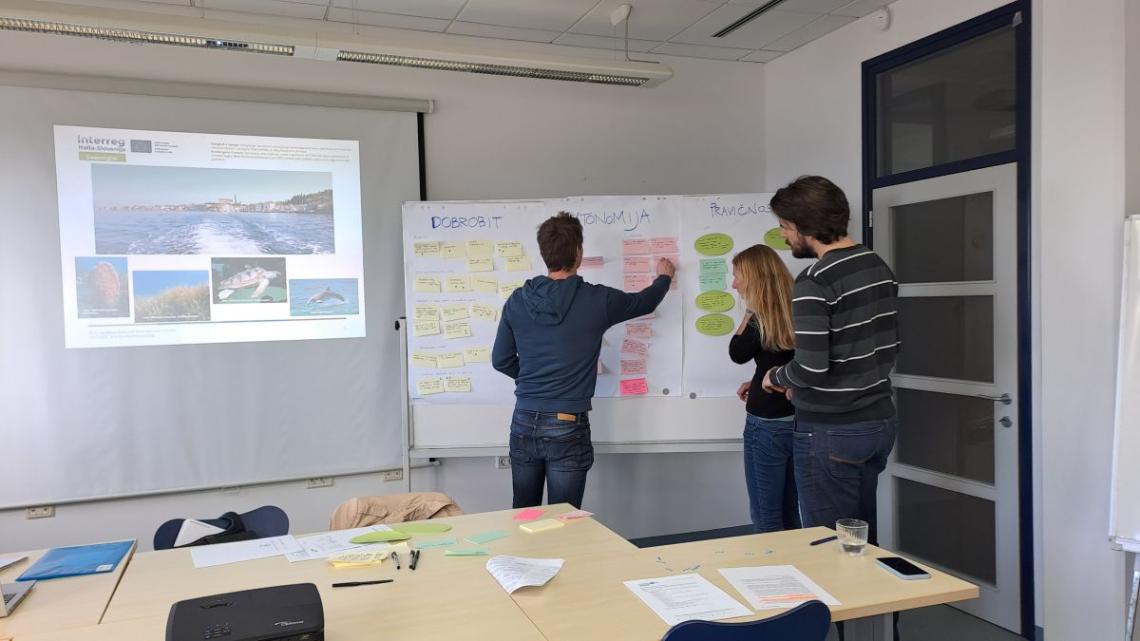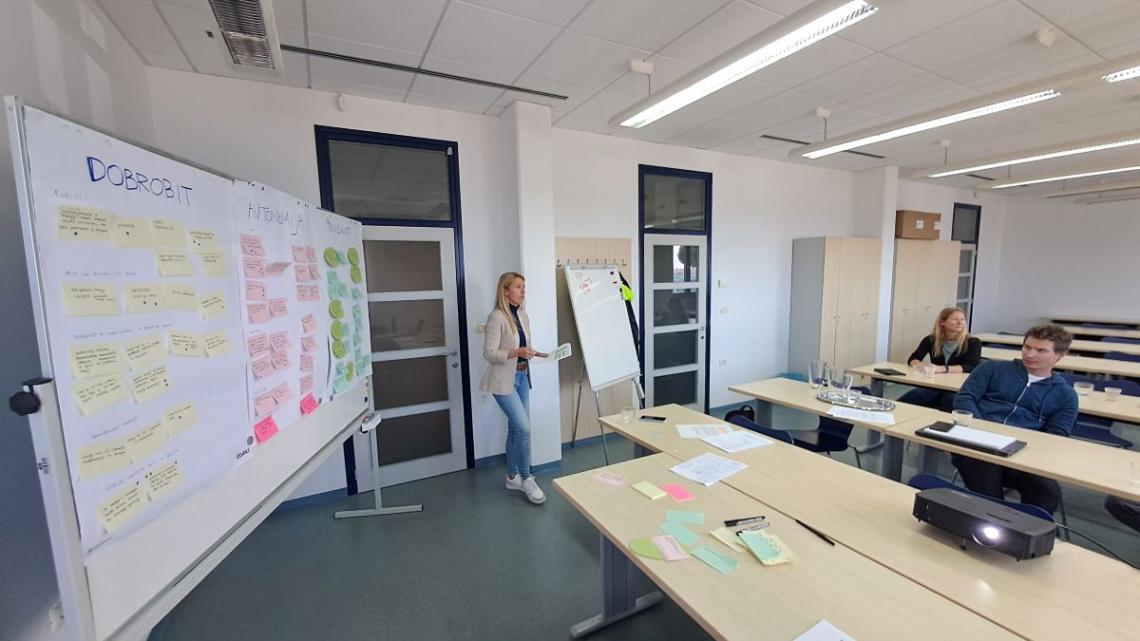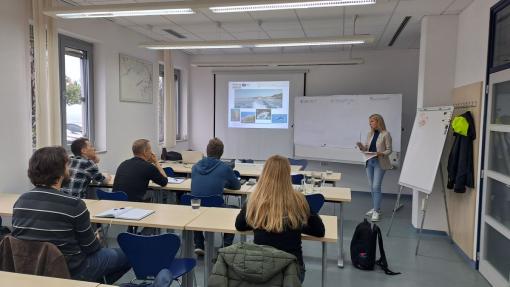… in “the company” of bottlenose dolphins
Following the first focus group with local decision-makers, we conducted a second focus group, this time with marine biologists, researchers, and experts working on marine biodiversity. This session was held at the Marine Biology Station in Piran, Slovenia, and included participants from the Marine Biology Station, Akvarij Piran, the Fishery Research Institute of Slovenia, University of Primorska, and Morigenos - Slovenian Society for Marine Mammals.

Like the first group, the aim was to understand how marine biologists and researchers perceive and interact with the marine and coastal ecosystems of the northern Adriatic. We used the same guided interview protocol, focusing on the three main research topics: well-being, autonomy, and fairness. Based on the group’s background participants shared insights, particularly regarding how legislation related to protected species impacts their work. They highlighted challenges associated with obtaining permits and the administrative burden they face when working with protected species. Similar to the first focus group with protected area managers, marine biologists also expressed concerns about the lack of accountability for irresponsible behavior in nature, such as littering and illegal fishing.
During the focus group, we were pleasantly surprised by a pod of dolphins swimming past the marine biology station. We paused the discussion for a moment to appreciate the stunning sight of wild marine life in our seas.

In the coming weeks, we plan to conduct additional focus groups with fishermen / aquaculture representatives, and local tourism providers. The focus groups in Italy are being implemented as well, led by the project partner University of Padova and in collaboration with project partner Shoreline.
These sessions will contribute to a better understanding of key stakeholders' relationship with the marine environment across the northern Adriatic region. The insights from all these groups will be invaluable in shaping the overall report, which will include the outcomes of these discussions and serve as a foundation for the development of the ethical matrix. More about the aim of this study find HERE.

